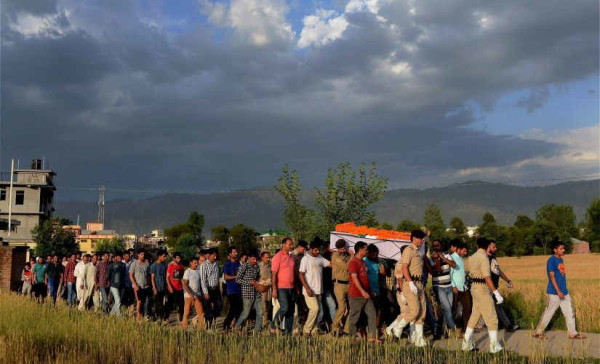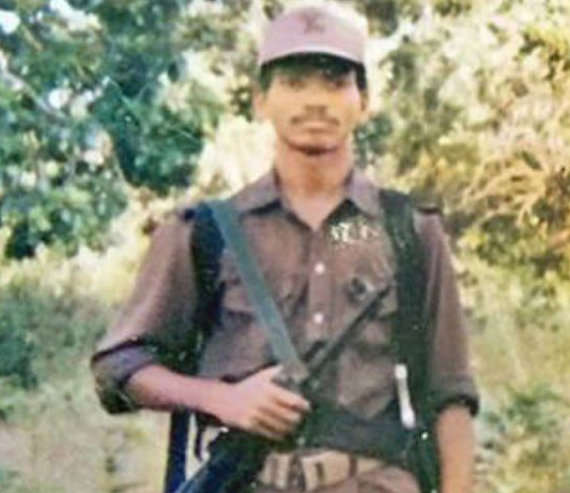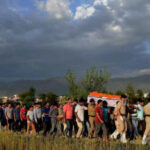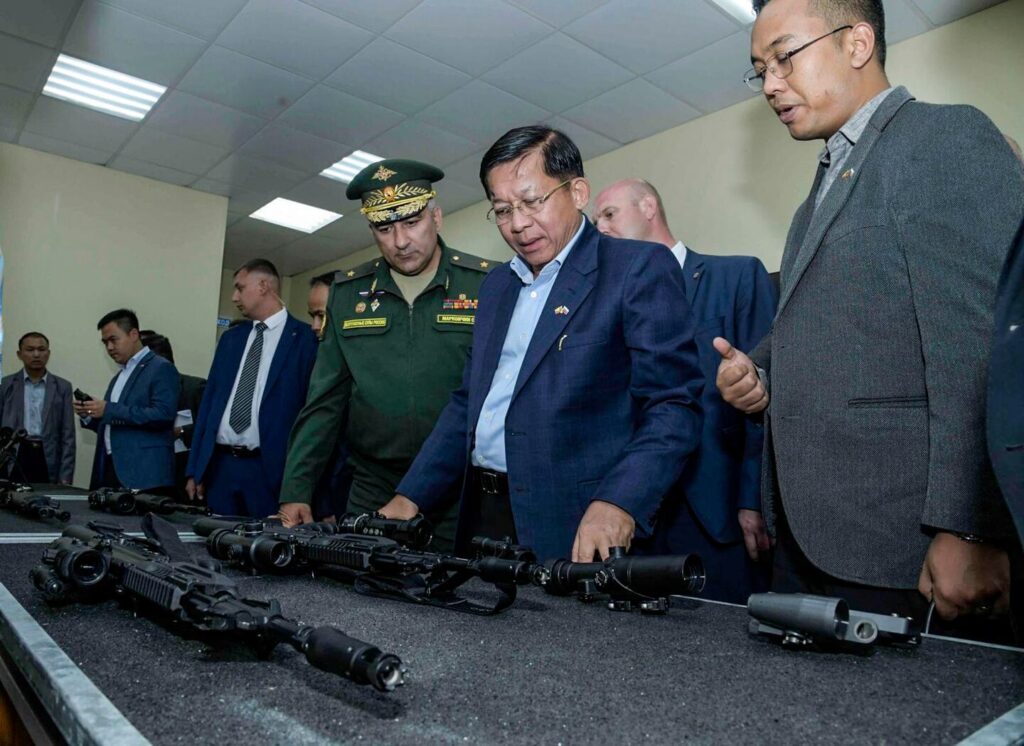MANTRAYA ANALYSIS#20: 17 JANUARY 2018
BIBHU PRASAD ROUTRAY
Abstract
Another year went by. The problem of Left-wing Extremism (LWE) in India, however, continues to persist. In 2017, the left-wing extremists, belonging predominantly to the Communist Party of India-Maoist (CPI-Maoist) carried out more number of attacks killing and injuring more security forces than the previous year. They snatched more arms from the security forces and fewer cadres surrendered. Despite the fact that the operational weakness of the CPI-Maoist has been repeatedly acknowledged by the outfit’s top leadership and its influence is now confined to pockets in a handful of states, the LWE problem in India continues to rank high in the list of internal security challenges that the country faces.
Data
According to assessment of the Ministry of Home Affairs (MHA), while 106 districts of 10 states are affected by LWE activities, 35 districts in seven states report 90 percent of the extremist violence. Of these seven states, five states- Chhattisgarh, Jharkhand, Bihar, Odisha and Maharashtra- account for bulk of the LWE related incidents and resultant fatalities. This situation has remained almost unchanged in the past few years. In 2017, the extremists killed 180 civilians and 75 security forces in 855 incidents of violence. They managed to snatch 34 weapons from dead or injured security force personnel and organised 19 arms training camps and 21 people’s courts where instant justice was delivered on the guilty. In turn, security force operations led to killings of 132 extremists, 1786 cadres were arrested and 666 cadres surrendered. (All data till 15 December 2017)
The Epicentre

(Police officers and locals carry body of a Central Reserve Police Force (CRPF) personnel who died in the
24 April 2017 LWE attack in Sukma, Chhattisgarh. Photo Courtesy: Livemint)
According to MHA’s provisional data, Chhattisgarh, the worst LWE-affected state, accounted for 41 percent of the LWE related incidents and 51 percent of the fatalities. The state’s maximum concentration of anti-LWE operations, justifiably appears to have been in Chhattisgarh. In the last two years, 2016 and 2017, a total of 1,476 anti-LWE operations were carried out in Chhattisgarh by the state police and central paramilitary forces, almost at the rate of two operations per day. One in every three operations resulted in an encounter. At the same time, 102 security personnel including 42 policemen, were killed by the extremists since 2016. The incident and fatalities ratio (37 percent) in Chhattisgarh is the highest in the country indicating occurrence of fatality in every third encounter between the extremists and the security forces.
The achievements in 2017 alone, however, have been far less impressive. According to the Chhattisgarh police, 135 Maoists were killed in 2016. In 2017, the number fell by nearly 50 percent, to 76. The number of surrenders decreased from 1214 in 2016 to 365 in 2017. Only 221 weapons were recovered from the Maoists, pointing at the fact that most of these neutralised Maoists were probably low-rung cadres and overground workers of the outfit. The number of security personnel killed has increased from 39 in 2016 to 59. The only area where the security forces have done better is to register an increase in the number of extremists arrested. From 977 arrests in 2016, the year 2017 witnessed 1017 arrests.
Chief Minister Raman Singh in August 2017 vowed to eliminate LWE from the state before 2022. Interestingly, Singh had earlier suggested that the problem is in its deathbed and would be solved much quicker. This sombre re-stocktaking in a way recognises the capacities of the CPI-Maoist to dig deep in its traditional strongholds and the limitations of the state’s approach marked by serious loopholes including lack of coordination between the state and central forces. Some of these problems would be dealt in the later part of the essay. Nevertheless, eight districts of the state seven of which are tribal dominated- Dantewada, Bijapur, Sukma, Narayanpur, Kondagaon, Bastar, Kanker and Kabirdham- continue to witness extremist violence and at least five of them remain under firm extremist domination.
The state of affairs prevails in spite of the fact that close to 75000 security force personnel have been participating in the anti-LWE operations for the past several years and the eight affected districts have received generous financial assistance from New Delhi. On 9 January 2018, Rupees 696 crores were sanctioned by New Delhi under the Special Central Assistance Scheme for the eight LWE affected districts of Chhattisgarh.
Beyond the Epicentre
The police chief of Jharkhand, the second worst affected state, has predicted an end to the LWE problem in the state by the end of 2018. The state police claim to have worked in close cooperation with the civil administration to clear most of the areas of the state from the influence of the CPI-Maoist and other smaller groups. As a result, the state recorded lesser number of extremist related incidents and fatalities compared to the previous year. In 2017 (till 15 December), 55 deaths in 240 incidents were reported, compared to 323 incidents and 85 deaths in 2016. According to the state police sources, 34 police-led encounters led to the killing of 12 senior LWE leaders. In addition, 558 extremists including 50 commanders were arrested and 36 weapons that were looted from the police were recovered. However, pockets within the state and the inter-state borders continue to remain hotbeds of extremist activity.
Similarly, in Bihar, three areas- the Jamui/Nawada/Giridih (triangular section), the Gaya-Aurangabad section and the Lakhisarai/Munger/Banka/Jamui section remain under the influence of the CPI-Maoist. According to a June 2017 assessment of the Bihar police, 43 top Maoist commanders including 53-year-old Arvind Singh are active in the state. In Odisha, the inter-state border areas with Andhra Pradesh, Chhattisgarh, and Jharkhand continue to witness extremist violence. Pockets in districts like Malkangiri, Koraput, Rayagada, Nuapada, and Kalahandi witness intermittent extremist violence. In the biggest attack of the year in the state, on 1 February 2017, eight police personnel were killed and five others injured in a landmine explosion carried out by the CPI-Maoist cadres in Koraput district. Indeed, the states are currently experiencing the difficulties of dealing with a dispersed and hard to detect adversary which continues to exploit one of the prominent loopholes in counter-LWE operations, i.e. inter-state coordination. Asymmetric deployment of central forces- over 100 battalions in states like Chhattisgarh and Jharkhand and only 16 battalions in Odisha and seven battalions in Bihar- has created a serious problem of lopsided capacities and has not helped addressing the problem.
Maoist Core Strength

(Madvi Hidma, 36-year-old member of CPI-Maoist’s Central Committee)
CPI-Maoist’s strength is intrinsically linked to the support it elicits, voluntarily or through coercion, from the tribal population. Amid official narrative of a fast-declining support base of the outfit, the CPI-Maoist has indeed taken key steps to preserve what remains one of its critical lifelines. One such measure is the elevation of Madvi Hidma, the 36-year-old tribal as a member of the Central Committee (CC), the highest decision-making body of the organisation. The event has been highlighted widely in the media, although the security establishment claims to have no knowledge of it. Nevertheless, through such promotion in the hierarchical CPI-Maoist, Hidma earns the distinction of becoming the youngest CC member and is the second tribal to reach the coveted position. This move could act as protecting the pro-tribal face of the organisation, long accused of being dominated by the non-tribals.
Pitted against a determined adversary and an existential threat, in 2017, the CPI-Maoist demonstrated further shift towards militarisation. It now appears the outfit believes in a strategy of regaining lost ground by carrying out carefully orchestrated attacks on the security forces and holding on to the area where its top leadership and infrastructure are located. Towards that direction, intelligence reports suggest that the 68-year-old general secretary of CPI-Maoist, Ganapathy is paving way for his second-in-command and chief of the Central Military Commission (CMC) Nambala Keshav Rao alias Basavraj to gradually lead the organisation. Described as an expert in explosives and military techniques, Basavraj’s elevation could bring about a decisive shift in CPI-Maoist’s strategy. For long, much of state’s efforts are focussed on neutralising top leaders of the outfit and Ganapathy ranks high in that priority list. By opting to chart out a new set of leaders, the outfit can prolong its armed engagement with the state should Ganapathy be incapacitated.
To implement such a strategy the CPI-Maoist would require the services of capable military formations who not only carry out intermittent attacks on the security forces, but also have the ability to survive the onslaughts of the state. Two potent Maoist formations continue to operate in Chhattisgarh. These include a battalion headed by Madvi Hidma and the Abujhmad division of the Maoists. The Hidma-led battalion is especially successful in maintaining a less than 10 percent casualty ratio compared to the security forces, a fact acknowledged by the Chhattisgarh police. This battalion was responsible for the killing of 37 CRPF personnel in two back to back attacks including the one at Burkapal in April 2017 which claimed the lives of 25 CRPF men. As a result, the Abujhmad region and southern part of Sukma district continue to the under the firm grip of the extremists. Similarly, as mentioned before, Jharkhand’s tribal areas continue be a Maoist bastion.
Capacities of the State
A force centric anti-LWE policy has gained ascendancy under the current regime in New Delhi. The government has attempted to focus on increasing the capacities of the forces, undertaking proactive operations, and neutralising top extremist leadership even by undertaking covert operations and. However, like its predecessor, even this government has struggled to implement such a policy that are wracked by a range of deficiencies. One such problem is the command and control problem within the Central armed police forces like the CRPF. Home Minister Rajnath Singh underlined the issue in his meeting with the chief ministers and police chiefs of 10 LWE affected states in May 2017. He said that the Indian Police Service (IPS) officers must lead the paramilitary forces like the CRPF instead of leaving the job to junior officials and working from the comforts of their offices in cities. Secondly, coordination between the state police forces and the CAPFs remain far from satisfactory. Following the April 2017 attacks, the security advisor in the Home Ministry Vijay Kumar reportedly accused the Chhattisgarh police of not providing cooperation with the CRPF. The UPA government had created United Command (UC) structures in four different states- Chhattisgarh, Jharkhand, Odisha and Wes Bengal- to establish coordination between the various forces who take part in the anti-LWE operations. It was revealed that the UC structures did not meet every six months, as per the norms, but as per convenience of the concerned authorities and mostly after a major attack. A meeting of the UC in Chhattisgarh, for instance, took place in May 2017, after a gap of 15 months and was convened only after two major attacks by the extremists in March and April 2017 .
From the security force point of view, a popular theory has been around for a while prescribing a solution to the LWE problem. It says the CPI-Maoist can be defeated only by sustained deep penetrating operations into the core extremist stronghold areas. While this can certainly provide a solution to the military nuisance of the CPI-Maoist, somehow most state administrations have managed to elicit only a partial involvement of the civil administration whose role in areas cleared by the security forces assumes critical importance. A report by the Comptroller and Auditor General (CAG) of India in 2017 which assessed special development initiatives in the LWE-affected areas over the past five years has found most of these programmes failed miserably.
States over the years have indeed taken gradual steps to increase the writ of the state into the hitherto LWE dominated areas. In Chhattisgarh, new security posts have been established in Kistaram-Golapalli (Sukma), Tarlaguda and Bhadrakali (Bijapur) and the Bastar range now has 14 helipads equipped for night landing of choppers used mostly for logistical duties. Such moves have succeeded despite extremists attempts to mount repeated attacks on the security forces setting up such camps and also public relations campaigns urging tribals to undertake ‘Police Camp Bhagao Andolan‘ (movement to chase away police camps). In addition to the problem of generating HUMINT, the dearth of TECHINT dents the capacities of the security forces. The Home Ministry has admitted that the technical intelligence inputs in Chhattisgarh’s Bastar zone are abysmally low. A primary reason for this is the below 20 per cent effective mobile phone connectivity in Bastar. In districts like Sukma, it is only four per cent.
Jharkhand, compared to other states, appears to have done better in establishing close coordination between its civil administration and the security forces. A host of development plans are in place for 13 identified ‘focused areas’ in the state. These ‘focused areas’ had been identified in 2014, where the administration set up 13 security camps to ensure implementation of development and welfare plans. In 2018, additional 30 security camps are planned for these areas.
Other measures initiated by New Delhi for the LWE affected areas include road connectivity projects and mobile connectivity through installation of mobile towers. The government proposes to construct 5412 kilometres of roads and 126 bridges in the LWE affected districts at the cost Rupees 117.25 million. The Home Ministry is seeking the cooperation of other ministries to make education and skill education accessible by initiatives like Rashtriya Madhyamik Shiksha Abhiyan (RMSA), Sarva Shiksha Abhiyan (SSA) and establishing Kendriya Vidyalaya (KVs) and Jawahar Navodaya Vidyalaya (JNVs) in the affected districts. Financial inclusion too is being prioritised by opening up of banks, ATMs and post offices in coordination with Department of Financial Services and Department of Post.
All these are necessary steps. However, the pace and the sincerity with which these are implemented would remain vital for the state to be able to make inroads into the extremist dominated areas.
References
Dipankar Ghose, “Chhattisgarh government data: ‘Fewer Maoists killed, more personnel dead’”, Indian Express, 3 January 2018, http://indianexpress.com/article/india/chhattisgarh-data-on-maoists-fewer-maoists-killed-more-personnel-dead-5009322/
Ejaz Kaiser, “Chhattishgarh vs Maoists: Cops plan intelligence-based operations”, New Indian Express, 7 January 2018, http://www.newindianexpress.com/thesundaystandard/2018/jan/07/chhattishgarh-vs-maoists-cops-plan-intelligence-based-operations-1746494.html
‘Naxals will be wiped out from Chhattisgarh by 2022’”, Times Now, 2 January 2018, http://www.timesnownews.com/india/article/naxals-maoists-chhattisgarh-2022-naxalism-maoism-raipur-paramilitary-forces-crpf-raman-singh/184306
Pavan Dahat, “CPI (Maoist) commander Hidma promoted to Central Committee”, The Hindu, 10 September 2017, http://www.thehindu.com/news/national/other-states/cpi-maoist-commander-hidma-promoted-to-central-committee/article19653439.ece.
Rabindra Nath Choudhury, “Chhattisgarh police face flak for not helping in anti-Naxal operations”, Asian Age, 6 May 2017, http://www.asianage.com/india/all-india/060517/chhattisgarh-police-face-flak-for-not-helping-in-anti-naxal-ops.html
“Rajnath Singh makes ‘aggressive’ anti-Naxal pitch”, Indian Express, 8 May 2017, http://indianexpress.com/article/india/rajnath-singh-makes-aggressive-anti-naxal-pitch-4646377/
“Rajnath Singh pulls up IPS officers over war against Naxals, New Indian Express, 8 May 2017, http://www.newindianexpress.com/nation/2017/may/08/rajnath-singh-pulls-up-ips-officers-over-war-against-naxals-1602434–1.html
“Rajnath Singh takes stock of Anti-Naxal strategy”, Livemint, 9 May 2017, http://www.livemint.com/Politics/PnEcXs8uIj8cTfOu003sRK/Rajnath-Singh-to-chair-high-level-meeting-today-to-take-stoc.html
Shantanu Nandan Sharma, “Taking on Maoist bastions in the Naxal heartland of Bastar”, Economic Times, 7 May 2017, https://economictimes.indiatimes.com/news/politics-and-nation/taking-on-maoist-bastions-in-the-naxal-heartland-of-bastar/articleshow/58552298.cms.
Naxalism shall be eradicated from Jharkhand by 2018: DGP, Indian Express, 10 January 2018, http://indianexpress.com/article/india/naxalism-shall-be-eradicated-from-jharkhand-by-2018-dgp-5019506/
(Bibhu Prasad Routray is the Director of MISS. This analysis has been published under Mantraya’s ongoing “Mapping Terror and Insurgent Networks” Project. All Mantraya publications are peer-reviewed.)




